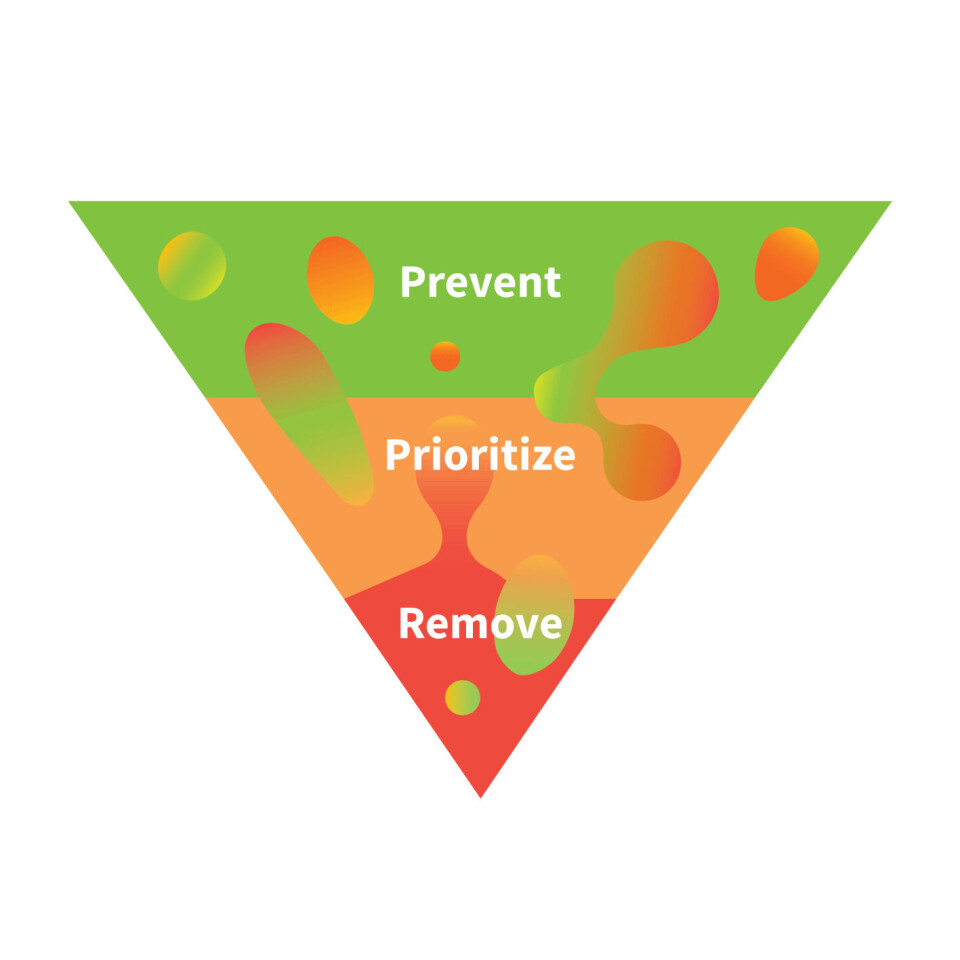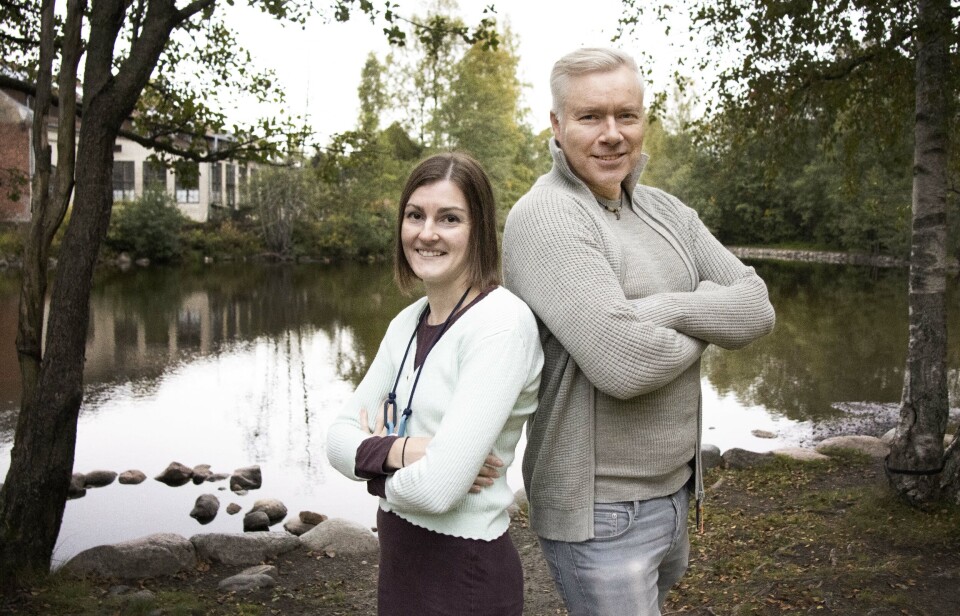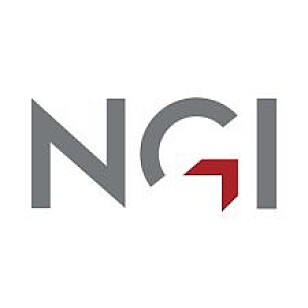THIS ARTICLE/PRESS RELEASE IS PAID FOR AND PRESENTED BY NGI - the Norwegian Geotechnical Institute - read more

Your teflon frying pan and shampoo release invisible pollution. Huge EU project aims to stop this
These pollutants go down the drain, where they do not degrade and can travel long distances. They remain in water and are problematic for humans and the ecosystem. Now the EU is taking action.
Frying pans with teflon coatings so your food does not burn. Detergents to keep your clothes and dishes clean. These are examples of how we, in our daily lives, come in to contact with invisible pollutants called PM substances.
PM substances stands for persistent and mobile substances. There are many PM substances that are also toxic, and these are referred to as PMT – Persistent, Mobile and Toxic substances.
Examples of PM substances that we come in to contact with daily are melamine, benzotriazole, 1,4-dioxane and PFAS – which is a large group of substances that contain fluorine. PM substances are used in a range of products, many of which can be found in your kitchen. Washing up liquid can contain benzotriazole which is a corrosion inhibitor. Perhaps you have plates and cups that are made of bamboo? In which case there is the risk that they also contain melamine which is added in order to protect them from cracking. PFAS is found in frying pans and in waterproof clothing. When these items are washed, melamine and PFAS are released and end up in the water. 1,4-dioxane is found in makeup, shampoo and certain soaps.

PM substances have diverse physicochemical properties which means that their exposure routes to humans can vary. Some of them are induced via food, others via air and external surfaces, and a great proportion of them via water. There are certain areas in the world where the concentration of PM substances in drinking water is high and this represents the primary exposure route for humans.
Because these substances are mobile in water, they can be transported over very long distances and are a threat to drinking water sources and pristine environments. This worldwide problem has led to both new regulation and extended monitoring efforts, especially in the EU.
ZeroPM's project coordinator Sarah Hale presents the PM substances that can be found in your kitchen. (Video: Youtube)
From talking to action
Researchers and decision makers have discussed for several years now what drastic action is needed to protect people – and especially water – from these persistent and mobile substances. Under the European Green Deal, bold ambitions and action points have been set. The European Commission's comprehensive political program for Green Growth includes very clear targets related to pollution. In October 2020, the EU released a strategy aimed to move towards a sustainable use of chemicals – The Chemicals Strategy for Sustainability and in May 2021 the Zero pollution action plan Towards zero pollution for air, water and soil was released.
In May 2021 the EU research and innovation action project ZeroPM, which stands for 'Zero pollution of persistent and, mobile substances', was awarded 11.6 million Euros from the EU's Horizon 2020 research program. The project is led by the NGI - Norwegian Geotechnical Institute.
"The name ZeroPM signalizes a very clear goal with large research backing. Zero pollution. The bold action points put forward by the EU in conjunction with the frameworks and methods to be developed in ZeroPM, will ensure we move from talking to action," project coordinator of ZeroPM Sarah Hale said.
A collaboration between researchers, decision makers and businesses
Until 2026 more than 60 researchers will work together with policy makers, industry representatives and NGOs to find innovative and sustainable solutions for pollution caused by PM substances.
"ZeroPM unites researchers, industry and policy representatives from the chemical, business and water sectors. The fact that ZeroPM can act as an arena for these groups of people to talk to each other and find solutions is very important," deputy coordinator Hans Peter Arp said.
The pollution caused by PM substances presents a complex problem and affects many different sectors of society unevenly and in unique ways, so it is important to approach the problem systemically.
"This invisible pollution is part of our daily lives. PM substances are used today in many products. Release to the environment is possible at various different stages in the product's life cycle. It is important to consider everything from production and storage of the PM substance, which products contain the PM substance, how the waste is handled to what happens when the PM substances reach the environment or drinking water," Arp said.
We do not know how many PM substances there are in the environment today. But it is likely to be in the thousands.

Prevent, prioritise and remove
The ZeroPM approach to tackle the challenge of PM substances is three-fold: prevent, prioritize and remove.
"The three-fold approach is key to achieving ZeroPM's goal of zero pollution," Hale said.
For the first approach, preventing the use of PM substances, ZeroPM will focus on three important aspects:
- developing new methods to identify safe and sustainable alternatives to harmful PM substances
- strengthening the implementation of new policy in connection with the EU's Green Deal which will act as an enabler for PM substance policy,
- supporting industry to replace PM substances with safer and more sustainable alternatives
Prioritising those that are most harmful
The second approach, Prioritizing the most harmful PM substances, is necessary because it is not possible to regulate all individual PM substances at the same time.
"Here we need more knowledge about which PM substances are used today and which of these are the most harmful to the environment and human health," Hale said.
She explained that ZeroPM will focus on two main things: whether it is possible to group PM substances to regulate or substitute several at once, and how advanced methods can identify which PM substance groups are most hazardous for the environment and human health. A key reason for grouping is to avoid regrettable substitution, where one substance is replaced by another that is just as, or even more, hazardous.
"One example of regrettable substitution is the PFOA replacement GenX. PFOA is used to produce Teflon used in frying pans and in water proof jackets. GenX, like PFOA before it, is now detected in drinking water in America and Europe and society is forced to use valuable resources to phase it out," Arp said.
If GenX and PFOA had been grouped together, GenX may not have been considered as a substitute for PFOA.

When should we clean up?
The final strategy in ZeroPM is removal. Three test sites – two in Germany and one in Greece – will be used to identify sustainable solutions which stop PM substance pollution from spreading in to the environment, especially drinking water resources.
"In one of the test sites, Rastatt in Germany, contaminated sludge was applied to agricultural land. The area is now one of Europe's most contaminated areas by small, mobile PFAS – an important group of PM substances. Clean up at the site, including the drinking water, is resource and time consuming, but a key focus of the local authorities and scientists working with ZeroPM. The goal is to develop solutions that prevent new 'Rastatt' areas," Arp said.
ZeroPM will take a holistic approach by considering the economic, technological and environmental costs and benefits of different remediation methods, to avoid something called 'regrettable remediation'. Regrettable remediation occurs when the environmental costs of clean-up out weight the benefits of managing the contamination problem.
"We will find the tipping point for when clean-up is needed and for when resources should be used elsewhere," Hale said.
High societal gain
ZeroPM, which started in October 2021 is already well underway and the first groups of PM substances to prioritize have been selected.
"The work we are undertaking is large and complex. However, there is a high societal gain," Hale said.
She pointed to the fact that reducing the concentration of these chemicals in the environment will have a positive effect on people's quality of life and the ecosystem, both in the short and long term. Companies that develop and use safe and sustainable alternatives to harmful PM substances will increase their competitiveness and gain financially over the long term, as they will be most ready to adapt the targets of the EU Green Deal. There will be an increase in job possibilities in the green chemical sector and environmental remediation market.
"We are optimistic and believe that it is possible to reach the goal of zero pollution from persistent and mobile substances," Hale concluded.
See more content from the Norwegian Geotechnical Institute:
-
PFAS: This could stop the dangerous chemicals from leaking into the environment
-
This determines how dangerous a dam failure can be
-
Will it be possible for humans to build and live on the Moon for extended periods of time?
-
NGI-led EU project will digitise the mining industry and ensure increased sustainability
-
Linking art and research to disseminate knowledge on plastic pollution
-
Establishing a plastics recycling plant in a refugee camp in Ethiopia





































